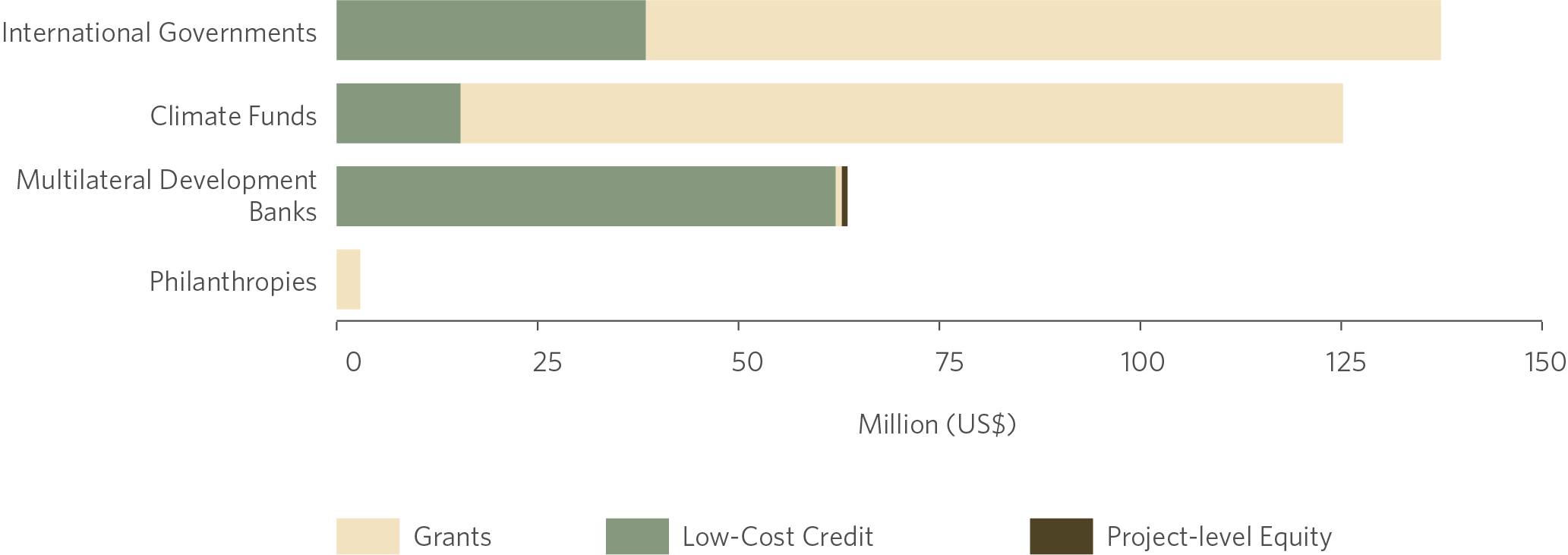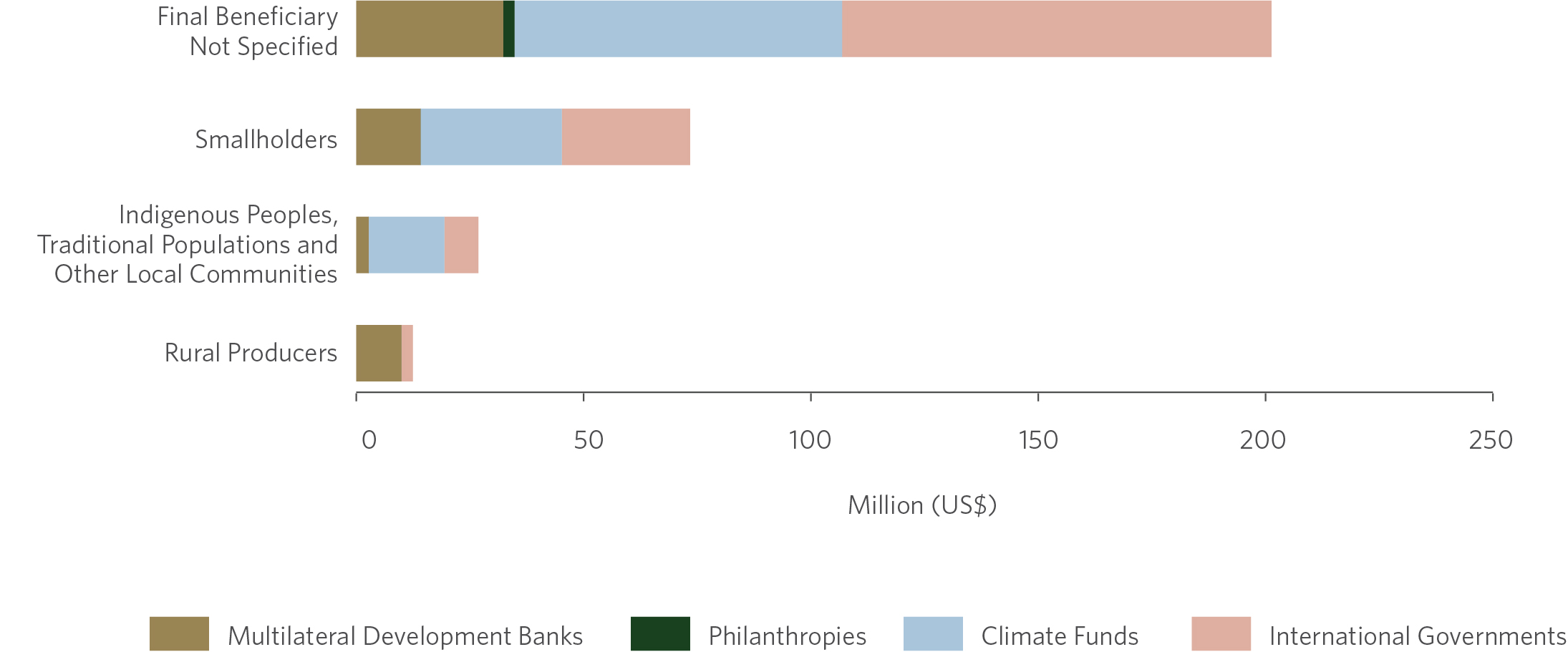Sources of finance for international cooperation and development channeled US$ 320 million/year in climate finance for land use in Brazil between 2015 and 2020, accounting for 5% of climate-aligned financial flows.
International finance originate mostly from public sources (Figure 11). International governments (US$ 136 million/year), climate funds (US$ 125 million/year) and multilateral development banks US$ 58 million/year channeled finance mainly via grants (US$ 216 million/year). These sources include the German government (US$ 79 million/year), the Amazon Fund (US$ 20 million/year), the GCF (US$ 33 million/year), the GEF, (US$ 32 million/year) and the government of Norway (US$ 20 million/year). To avoid the double counting of financial flows, the source of finance called “international governments” does not include grants from the governments of Germany and Norway to the Amazon Fund.
Figure 11. Climate Finance for Land Use in Brazil in International Cooperation and Development by Funding Sources and Instruments, 2015-2020

Note: The values refer to the average amount in Brazilian Real (R$) during the analyzed period, deflated by the IPCA using December 2020 as reference. The values were converted into United States Dollar (US$), according to the average exchange rate for the corresponding year, as provided by the Central Bank of Brazil (Banco Central do Brasil – BCB).
Source: CPI/PUC-Rio with data from BNDES, OECD-DAC, and BID, 2022
The Amazon Fund is the main climate fund channeling international finance for land use in Brazil. Despite this, the Amazon Fund approved an average of US$ 20 million/year, equivalent to approximately 0.7% of the total climate finance tracked for land use in the country between 2015 and 2020.
While a large part of international public finance is made through grants, multilateral development banks channeled 98% of finance tracked via low-cost credit (US$ 57 million/year). Most of this finance was allocated by the World Bank (US$ 39 million/year) via loans to state governments, with finance geared towards activities tied to the forest sector (US$ 25 million/year).
Much of the international finance tracked was earmarked for projects in the forest sector (US$ 223 million/year), with the aim of contributing to public policies and strategies related to deforestation reduction, protected areas, environmental and land regularization and territorial planning. As such, this portion of the flows represents the provision of a public good.
In these structures, finance is approved for an “umbrella” project with actions or subprojects focused on potentially different objectives or target audiences. These projects are usually carried out by networks of public and private stakeholders, from federal and state agencies to the third sector.[1] In such projects, only the first beneficiary – i.e., the one who receives the funds to execute the project – can be identified, but not the final beneficiaries – i.e., those who indirectly and ultimately benefit from the funds (Chiriac, Naran and Falconer 2020).
Bearing these challenges in mind, US$ 31 million/year in climate finance were tracked for projects whose final beneficiaries were indigenous peoples, traditional populations and other local communities (Figure 12). The sources of finance were mainly international governments (US$ 8 million/year) and climate funds (US$ 19 million/year).
Figure 12. Climate Finance for Land Use in Brazil in International Cooperation and Development by Final Beneficiary and Instrument, 2015-2020

Note: The values refer to the average amount in Brazilian Real (R$) during the analyzed period, deflated by the IPCA using December 2020 as reference. The values were converted into United States Dollar (US$), according to the average exchange rate for the corresponding year, as provided by the Central Bank of Brazil (Banco Central do Brasil – BCB).
Source: CPI/PUC-Rio with data from BNDES, OECD-DAC, and BID, 2022
[1] In finance structures of this nature, resources can be channeled via concession or subsequent contracting of the other players involved in making projects operational (El Rashidy 2021).

